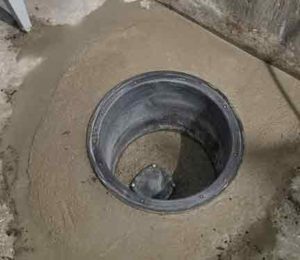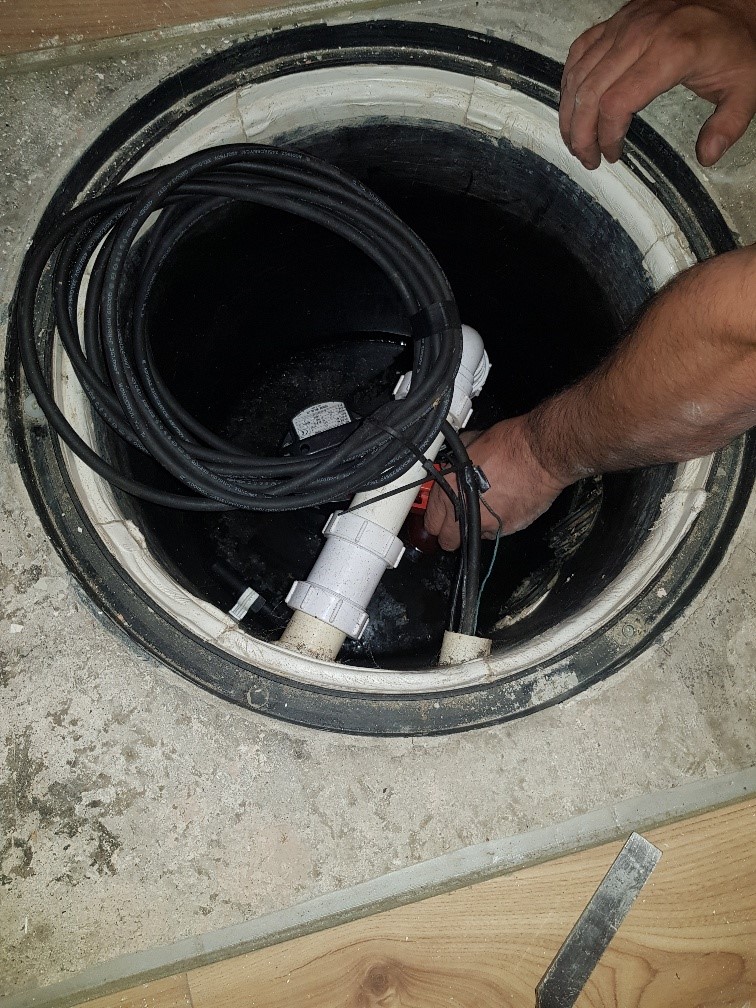Effective Tips for Caring for a Sump Pump
Effective Tips for Caring for a Sump Pump
Blog Article
This post down the page about How to Care for Your Sump Pump is fairly entertaining. Check it out for yourself and figure out what you think about it.

Sump pumps are essential elements in lots of homes, especially in locations prone to flooding or too much wetness. They aid avoid water damage by successfully eliminating excess water from cellars or crawl spaces. Nonetheless, like any other home appliance, sump pumps require routine upkeep to guarantee they operate effectively when required one of the most. Cleansing your sump pump is a crucial part of its maintenance, and comprehending exactly how to do it appropriately can save you from pricey repair work and potential calamities.
Introduction
Keeping a clean sump pump is vital for its appropriate performance and durability. Disregarding this important job can bring about clogs, malfunctions, and eventually, water damage to your home. Consequently, discovering how to cleanse a sump pump is essential for homeowners that depend on these gadgets to maintain their basements completely dry and protected.
Understanding the Sump Pump
Before diving right into the cleansing process, it's important to have a basic understanding of just how a sump pump functions. Normally installed in a pit or basin below the basement flooring, a sump pump includes several crucial components, including a pump, a float button, and a discharge pipe. When water accumulates in the pit, the float button activates the pump, which then pumps the water out through the discharge pipe, away from the structure's foundation.
Indicators of a Dirty Sump Pump
Knowing when your sump pump requires cleaning is important for preventing prospective breakdowns. Some common indications that suggest a filthy sump pump consist of weird noises throughout procedure, reduced water circulation, and noticeable debris in the pit. If you observe any one of these signs, it's vital to clean your sump pump without delay to prevent any further problems.
Getting ready for Cleansing
Prior to you begin cleansing your sump pump, it's vital to take some security precautions. Beginning by shutting off the power to the pump to avoid any electrical crashes. Furthermore, put on proper safety equipment, such as gloves and goggles, to shield yourself from dirt, debris, and possible virus.
Step-by-step Guide to Cleaning Up a Sump Pump
Shutting Off the Power
Begin by detaching the power supply to the sump pump to prevent any type of crashes while cleaning.
Eliminating Particles and Dust
Make use of a pail or an inside story to get rid of any type of noticeable particles, dirt, or debris from the sump pit. Dispose of the debris appropriately to prevent it from blocking the pump or the discharge pipe.
Cleaning the Pump and Drift Change
Once the pit is free from particles, thoroughly remove the pump from the pit. Check the pump and the float button for any indicators of damage or wear. Use a soft brush or towel to clean the surface areas and eliminate any type of built up crud.
Purging the System
After cleansing the pump and float switch, flush the sump pit with clean water to get rid of any kind of remaining dirt or sediment. This will certainly help ensure that the pump runs smoothly and successfully.
Looking For Appropriate Performance
Prior to re-installing the pump, do a quick examination to guarantee that the float button activates the pump properly. Put some water right into the sump pit and observe the pump's operation. If every little thing is functioning properly, you can rebuild the pump and reconnect the power supply.
Maintenance Tips to Maintain Your Sump Pump Clean
In addition to periodic cleaning, there are several upkeep ideas you can follow to maintain your sump pump in ideal problem:
Final thought
Cleaning your sump pump is an important aspect of its upkeep and ensures that it runs effectively when you require it one of the most. By adhering to the steps described in this overview and including routine maintenance right into your regimen, you can extend the life-span of your sump pump and safeguard your home from water damages.
6 STEPS ON HOW TO CLEAN A SUMP PUMP PROPERLY
UNDERSTANDING SUMP PUMPS
Your sump pump plays a crucial role in protecting your home by managing and removing excess water. It primarily functions as a “shield”, guarding your basement against the damaging effects of water accumulation. The pump is housed in a sump pit in the lowest part of your basement, and its job is to pump out any water that collects there.
During heavy rainfalls or when snow melts rapidly, water can infiltrate your basement, posing potential risks like flooding, structural damage, and harmful mold growth. Here, the sump pump springs into action, pumping out the intruding water and directing it away from your home.
SAFETY FIRST
Before cleaning, remember to prioritize safety. Disconnect the sump pump from the power source to prevent any accidental electric shocks. Also, wear sturdy gloves to protect your hands from any sharp or dirty components within the pump.
REMOVE THE SUMP PUMP
After ensuring your safety, the next step is to remove the sump pump from its pit. Doing this might require careful maneuvering as you don’t want to damage any pump components. Once removed, clean the sump pit to remove any accumulated debris or sludge.
INSPECT THE PUMP
Inspect the pump for any visible signs of wear or damage. Check the power cord, float switch, and impeller housing. If any components look worn out or damaged, consider replacing them to ensure optimal performance.
CLEAN THE PUMP
Thoroughly clean the pump with warm, soapy water. Make sure to rid it of any dirt, gravel, or other debris that might impede its performance. You can use a toothbrush to clean the small, hard-to-reach parts of the pump.
REINSTALL THE SUMP PUMP
Reinstall the pump into the sump pit Make sure it’s positioned correctly to remove the water effectively Once it’s back in place, reconnect it to the power source TEST THE PUMP
Finally, pour some water into the pit to ensure the pump works correctly. It should start automatically and begin pumping out the water; if it doesn’t, check the power source and the positioning of the pump.
Remember, while cleaning your sump pump is an essential part of home maintenance, hiring a professional plumber for a thorough inspection and cleaning at least once a year is also important. This will ensure that your pump is in optimal condition, ready to protect your home from potential water damage.
BEST PRACTICES FOR CLEANING SUMP PUMP DISCHARGE PIPES
Regular Inspection: Regularly inspect your discharge pipes, especially during heavy rainfall or snowmelt periods. Look for any signs of blockage or damage. Early detection of problems can prevent serious issues down the line. Periodic Cleaning: Over time, sediment and debris can accumulate in the discharge pipes, impeding the flow of water. Regular cleaning helps keep the pipes clear and functioning efficiently. You can use a high-pressure water jet to effectively clean the pipes. Insulation During Winter: In colder climates, discharge pipes can freeze, blocking the outflow of water. Protect your discharge pipes from freezing temperatures by insulating them with foam pipe insulation. This will ensure the sump pump can continue to discharge water even in freezing conditions. Proper Positioning: The discharge pipe should be positioned to direct water away from your home’s foundation. Improper positioning can lead to water seeping back into the basement. Ensure the pipe is long enough and angled correctly. Installation of a Check Valve: A check valve prevents water from flowing back into your sump pit after the pump has pushed it out. Installing a check valve helps maintain the efficiency of your sump pump and reduces the risk of flooding. Minimize Pipe Turns: Every curve or turn in the discharge pipe can decrease the efficiency of water flow. By minimizing turns and bends in your discharge pipe, you can increase the efficiency of your sump pump. https://www.fullspeedplumbing.com/how-to-clean-a-sump-pump-properly9999/

We hope you enjoyed reading our part about . Thank you so much for taking a few minutes to browse our post. Enjoyed our piece of writing? Please quickly share it. Help someone else locate it. I value reading our article about Keep Your Sump Pump Clean, It'll Keep You Dry.
Book Instantly Report this page